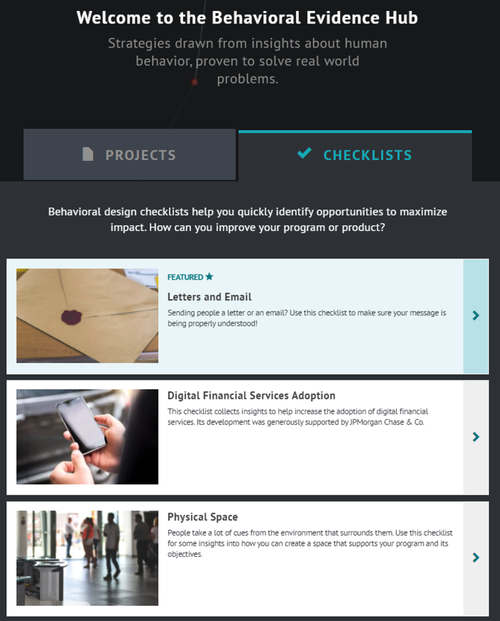Featured Resource: Behavioral Evidence Hub Website (bhub.org)
By Dr. Jonathan A. Caballero, Implementation Support Consultant
3-minute read
To be successful in implementing a change initiative, we need to clearly define the WHO, WHAT, and HOW. In short, we are asking someone (WHO) to do something differently (WHAT), clearly defining how we will support those changes to happen (HOW). Crucially, this is best achieved using evidence-based strategies (the HOW).
In practice, however, it can be difficult to locate evidence-based reports to guide the planning of a change initiatives. The Behavioral Evidence Hub (B-Hub) can facilitate this task. It provides a catalogue of over 100 projects using behavioral science in applied settings that showed evidence of impact in randomized experimental tests.
To maximize its relevance for implementation teams, each project includes a summary of the challenge it faced, the implementation design, its impact, and guidelines for implementation. Here is an overview of the main sections of the website.
Projects database
The B-Hub projects database allows searching projects and refining results using various criteria, including the field of work (such as agriculture, governance, and financial services), behavioral tools used (framing, reminders, social influence, etc.), geographic location, among others. For example, searching for interventions using social influence strategies to improve environmental outcomes in Latin America allows identifying an intervention that significantly reduced household water consumption.
We highly encourage people to explore options outside of their field of work. Often, we feel constrained to the evidence from the field of work we are in. But if you can find other fields of work with similar types of WHO or WHATs, you can adapt the strategies they have identified.
Behavioral design checklists
The B-Hub provides checklists conceived as an aid for implementation teams to quickly verify whether their planned strategies (i.e., HOWs) align with the evidence-based factors affecting its intended impact. The available checklists cover topics such as designing physical spaces, providing guidance for complex processes, and maximizing the impact of letters and emails. The checklists are interactive, and upon responding to each item, recommendations on how to improve the implementation, further information on their evidence base, and a link for the relevant source are provided.
Happy hunting for behavioral strategies!
This article was featured in our monthly Implementation in Action bulletin! Want to receive our next issue? Subscribe here.



